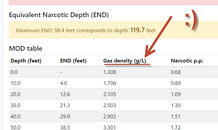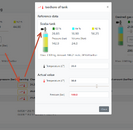@Oleg G. I would also have a feature request. I know this is quite unusual but would make your app even more useful for me (and possibly others).
I usually blend my rebreather diluents using banked nitrox (EAN32) and high pressure Helium. Nitrox is often less than 200 bars max, while He is usually upt to 300 bar and can be boosted. My rebreather cylinders are 300 bar.
Thus, I would find very useful to have another fill order in partial pressure blending mode which would allow us to calculate exact blends when high pressure He is available available and we want to blend higher end pressures than banked nitrox allows.
This would be (O2, Topoff, He) mode in addition to present modes.
Good idea, thank you!
added new mode: (O2, Topoff, He)





